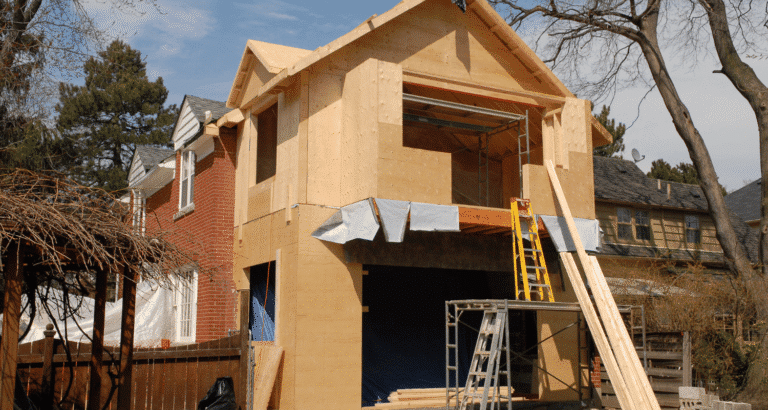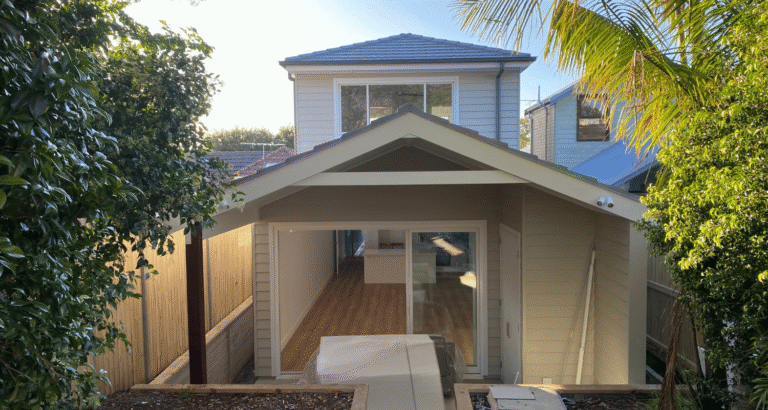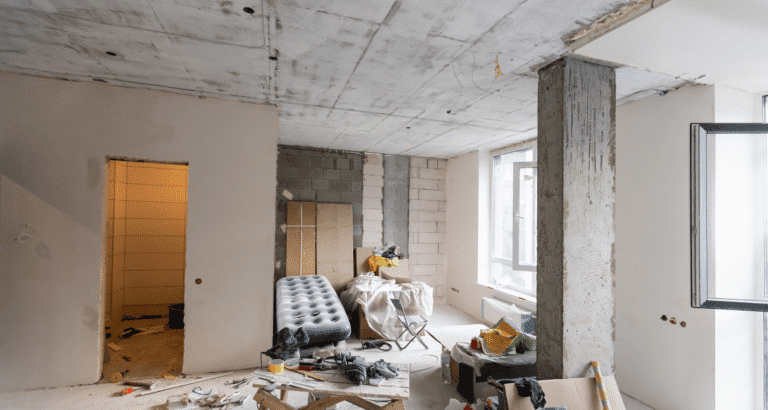When companies relocate to a new facility, it is never move-in ready. It is an office, whether commercial or industrial warehouse, a retail shop, or a suite made to measure; it has to fit the specific operational and branding requirements. The process is referred to as a tenant improvement construction; a renovation, upgrade, or building out of rented space to meet the needs of the tenant.
At Builders Group Construction, we know that we live in a world where these improvements make a significant difference in generating upbeat environments that increase productivity, attract clientele, and represent the brand.
What is Tenant Improvement Construction?
The term tenant improvement construction is used to describe the changes made in a rented commercial premises to make it operational in the business conducted by the tenant. These alterations may be as simple as paint jobs and flooring or include total office renovation, retail space remodel, or industrial-type space buildout.
However, unlike the old way of making buildings, tenant improvements are usually agreed on with the building owner as a tenant improvement allowance to cover some of the expenses of the company.
Why Tenant Renovations Matter
Each business is individualistic in its requirements. A template design may not be appropriate for your business or may not be comfortable with your brand image. This is the reason why tenant renovations are crucial- they make sure that your workplace not only works but is also aligned with your company’s image. For instance:
- The interior design plan of an office used for commercial purposes may be reaching towards an open layout, ergonomic seating, and contemporary lighting.
- A retail tenant improvement can emphasize display areas, point-of-sale, and flow of customers.
- An industrial buildout can consist of loading docks, robust flooring, and extensive storage solutions.
A company may operate in an environment that hinders growth.
The Role of Tenant Improvement Allowance
TIA (tenant improvement allowance) is one of the most crucial aspects of a tenant improvement project. This is the price that a tenant settles and pays to a landlord towards the cost of the renovations. The allowance will usually be a matter of lease negotiation, the nature of the property, and the specific needs of the tenant. As a tenant, it is necessary to:
- Clearly state appropriations during lease negotiations
- Engage construction contractors who work with tenants and who will give proper cost estimates.
By understanding what changes your home needs, you can go ahead and invest in the least important luxury changes.
Commercial Tenant Improvement Projects
Commercial tenant improvement projects are not all the same, since each business has different needs to operate, various expectations of customers, and other branding requirements.
An office may need a sophisticated design and the latest technology to be productive, whereas a retail store should provide a welcoming feel to customers to encourage them to spend money, and an industrial facility is so hardy and efficient that its appearance does not count.
Each project is unique and therefore requires proper planning and expertise to pull it off. Breakdown below of some of the most common scenarios:
Office Tenant Renovation
Building out offices, break rooms, conference rooms, and collaborative open spaces is often used along with a focus on energy-efficient lighting and contemporary configurations.
Retail Space Remodel
The tenants occupying retail chains are more oriented to the customers’ movement, store displays, fitting rooms, and attention-catching entrances, more representative of the store’s personality.
Industrial Space Buildout
Manufacturing buildings and logistics warehouses are demanding structures in terms of their flooring, loading dock facilities, and work site stability, maximum operational safety, and productivity.
No two projects are the same, and that is why it is always important to be working with locals when it comes to building out. They are knowledgeable in regional codes, zoning regulations, and construction patterns to help the smooth running of a project.
Choosing the Right Tenant Construction Contractors
Your modern tenant buildout plans could only work based on the team that you have hired. Quality is assured when quality tenant construction and commercial remodeling contractors come with experience in the balance between the three that concern functionality, aesthetics, and compliance. This is what to consider when choosing a contractor:
- Industry experience: Contractors who have a variety of projects at hand can adjust to the particular demands of office buildings, shops, and industrial ones.
- Familiarity with rules or regulations: Adherence to building rules and OSHA codes must be a given.
- Transparency in budget: A reputable contractor will be accurate with estimates and will assist you in utilizing your tenant improvement allowance to the fullest.
- Creativity in solution providing: Challenges are inevitable in every buildout, and experienced contractors can counteract situations so that the project can stay on time and budget.
Hiring a buildout expert in your area would help make sure you are not only compliant with the law but are maximizing the area to accommodate long-term growth.

Modern Tenant Buildout Designs
Innovation in today’s businesses would require more than the functionality of the company, but also having an inspiring humanistic working environment. Newer tenant build-out schemes are flexible, technology-enhanced, and environmentally sustainable.
- At offices: Consider arranging the workplace as an open environment with specific areas of cooperation, acoustically isolated telephone boxes, and an intelligent lighting system that will change during a working day.
- In retail: Exclusive designs such as minimalist design, low-intensity lighting, and customer-centered checkout are in fashion.
- Industrial: Undertakings here are focused on efficiency, so there should be two zones in the layout, including storage and operations, and other zones, which are concerned with the welfare of the workers, including amenities like lounges or training rooms.
These designs are not only modern-looking but also enhance productivity, positive customer experience, and a strong brand identity.
Office Tenant Renovation Trends
Nowadays, office work has altered, and so has office design. When it comes to office tenant improvement projects, hybrid work arrangements are gaining popularity as companies are showing an interest in balancing the need to work remotely and in the office. General characteristics are the following:
- Dedicated video conferencing rooms.
- Flexible seating arrangements like hot desks and collaborative lounges.
- Biophilic design elements: plants, natural light, and earthy finishes, for wellness and focus.
Businesses that adopt these trends can produce workspaces that are appealing to talent and flexible to the future of work.
Retail Tenant Improvement Plans That Work
Retail is about customer experience. Proper retail tenant improvement strategies will then be set to help the customers move around the store with ease. Some of the popular strategies are:
- To use strategic lights to bring out products.
- Acoustically sound open floor designs where exploration is encouraged.
- Engaging touch screens and technical integration with the new customers.
Together with a good brand image, these enhancements would convert basic retail outlets into destinations within the memory of customers.
Industrial Space Buildouts for Efficiency
An industrial space build-out is quite different from an office or retail fit-out in that the priority placed upon the functionality, efficiency, and safety of the spaces should be at the forefront of the plan. Such spaces must accommodate intensive use, specialized hardware, and a large number of workflows, so every design decision must be sensible and long-lasting.
The structural reinforcements, along with the safety of employees, are taken into consideration to create a space that not only sustains the pressures of day-to-day operations but is also within industry regulations. Companies are usually in need of:
- Reinforced flooring for heavy machinery.
- Climate control for inventory preservation.
- Clear safety signage and layouts that optimize workflow.
Investing in such improvements guarantees easy operations, improved productivity, and adherence to safety.
Why Work With Local Buildout Specialists
Exclusive benefits include the hire of local buildout experts. They know the codes locally, labor supply, and suppliers of materials in the region, which results in the project finishing on time and on budget. Local expertise translates into faster communication and greater accountability, which are two very important parts of a tenant improvement project.
Conclusion
Tenant improvements are a necessary component to any office upgrade or retail store remodel, not to mention any industrial space buildout. Whether it is how you negotiate your tenant improvement amount to who you choose as your tenant construction contractors, each step ultimately determines the success of your long-term project.
As a capable and experienced commercial tenant improvement contractor, Builders Group Construction, based in Dayton, OH, focuses on the development of individualized tenant improvement solutions that are based on functionality, creativity, and fiscal ratings.
Our mission is straightforward: we strive to assist you in turning your leased space into an efficient, fashionable, and company-centered area that stimulates your commercial expansion.
FAQs
What is a tenant improvement in construction?
A tenant improvement in construction is the adjustment that occurs on a rented commercial facility to suit the tenant’s operational or brand needs. This may contain everything from flooring and lighting upgrades to an office, retail degree, or industrial build-out.
What is an example of a tenant improvement project?
Examples of tenant improvement projects would be the conversion of an unused warehouse to an operational distribution center, a remodeled retail store with new display space, or modifying a leased office building with new and private offices and conference rooms.
What does TIA stand for in construction?
TIA refers to Tenant Improvement Allowance; it is the amount of money that a landlord may pay a tenant to help them cover the costs associated with renovations or build-out of the tenant space they are going to be leasing.
Who typically pays for tenant improvements?
Tenant improvements are usually financed by the landlord in the form of his tenant improvement allowance, together with the investment of the tenant. The specific set-up is often worked out in the defrayal plan.








